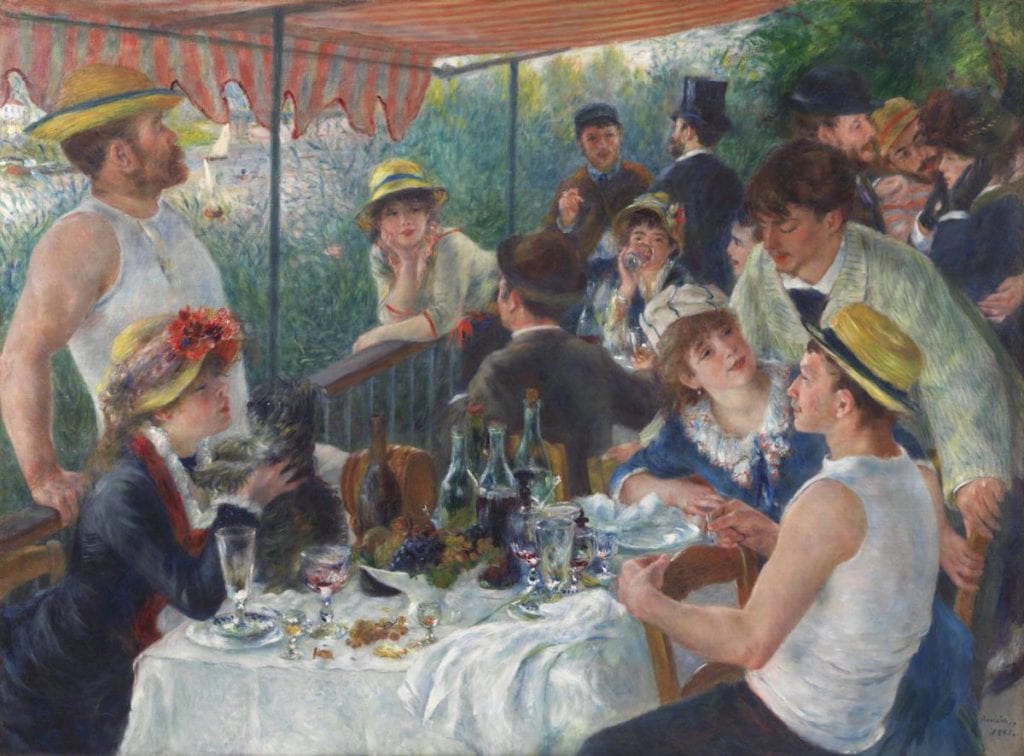The Phillips Collection: 100 Years as a Home for Art
By • March 13, 2021 0 1534

The Phillips Collection’s centennial anniversary exhibition should be serious news. Not just “Arts & Culture” news, but a mainstream feature story. America’s first museum of modern art, which houses an astonishing number of iconic masterworks, celebrates its 100th anniversary with a sprawling exhibition of the collection’s greatest hits and major recent acquisitions.
It is a testament to the modern era, to a growing international community of artists, to the local Washington arts scene and to the enduring relevance of traditional media in art. This milestone should be in every national newspaper and major magazine, with segments on television and radio programs like NPR’s “Weekend Edition.” And in any other time, I’d like to think it would be.
But instead, we’ve all been locked in our houses for the past year watching epidemics of disease, sedition and Zoom fatigue sweep the country. In times of crisis, the arts are among the first industries to be sacrificed and the last to recover — and museums, galleries and theaters are obvious no-gos during an airborne pandemic.
Now would be bad timing for any centennial celebration, but for an art museum it’s flat-out depressing — like celebrating the invention of bread during a wheat famine. However, in honor of the Phillips Collection and this momentous occasion, let’s end all that talk here. Not one more word will be written in this column about anything other than art.
The Phillips is now open for visitors with timed ticketed entry and, if you’re comfortable with it, I could not recommend with greater enthusiasm an excursion to the museum’s centennial exhibition, “Seeing Differently: The Phillips Collects for a New Century,” on view through Sept. 12.
A century ago, the Phillips Collection opened its doors in the Dupont Circle home of Duncan and Marjorie Phillips. It was unconventional at the time — and unprecedented in America — to create a museum within an intimate domestic space, as well as to form an art collection in full view of the public. However, Duncan Phillips (1886-1966) felt compelled to share his art, which guided him through the darkest hours of his young life, after the loss of his father in 1917 and his brother a year later (from the Spanish flu, no less).
“Seeing Differently” brings together more than 200 works — nearly the entire size of the original collection — by artists from the 19th century to the present. The exhibition cuts a circuitous path through the building, which revives and enhances the intimate scale and deft collecting strategy that I and so many others love about this museum.

“Luncheon of the Boating Party,” 1880-81. Pierre-Auguste Renoir. Courtesy Phillips Collection.
A visit to the Phillips is a decidedly more personal experience than going to the National Gallery of Art or the Barnes Foundation (more on that in a moment). The Phillips is not a palace of art; it is a home for it. Even today, the museum feels a bit like how I imagine it felt to visit Duncan and Marjorie at home, or Gertrude Stein or Peggy Guggenheim for that matter (well, maybe not Peggy). It’s part gallery, part salon, part home, built by someone whose life was art and whose art was his life.
There is a well-known anecdote that exemplifies the economy of the collection. Duncan Phillips had Albert Barnes down from Philadelphia to see Renoir’s masterpiece “Luncheon of the Boating Party.” “That’s the only Renoir you have?” asked Dr. Barnes, who owned at least 100 paintings by the artist (he would later use them to form the basis of the Barnes Foundation). Phillips replied, “It’s the only one I need.”
This story cuts to the core of what the Phillips Collection does best: it encapsulates entire epochs with concise selections of powerful, carefully curated masterworks that effortlessly bridge deep connections through our shared histories.
That isn’t to say the museum has not amassed important bodies of work by individual artists. The Phillips has some of the greatest-ever collections of works by Mark Rothko, Arthur Dove, Sam Gilliam, Forrest Bess and Pierre Bonnard, as well as Larrakitjs (contemporary iterations of traditional painted burial poles by aboriginal Australian artists).
But where the museum shines most brightly is in the many singularly collected pieces that impart an individual artist’s impact — grounding the artist in history while expanding our understanding of the canon as a whole. Works like this include El Greco’s “The Repentant St. Peter,” Willem de Kooning’s “Asheville,” Kara Walker’s “Crest of Pine Mountain, Where General Polk Fell,” Wolfgang Laib’s “Wax Room,” Anselm Kiefer’s “Jacob’s Heavenly Blood Blessed by Axes,” Benny Andrews’s “Trail of Tears” and Janet Tayor Pickett’s “And She Was Born.”
In my decade or so within the Washington arts community, I’ve fallen into more conversations at the Phillips Collection than anywhere else. I’ve made lasting friendships and seen some of my favorite exhibitions. I’ve had many impromptu coffee dates with writers, artists, curators and, on more than one occasion, with Director Dorothy Kosinski. That doesn’t happen anywhere else in Washington.
“Seeing Differently” seems to affirm that the current leadership is sticking closely to the Phillips family’s original vision. I don’t know if this is a result of some mandate in the Phillips Trust or a matter of vision and taste, but I’m not sure it matters. The result is muted, intimate and beautiful. This exhibition is a joy to experience.
The Phillips Collection, 1600 21st St. NW phillipscollection.org Thursday to Sunday, 11 a.m. to 6 p.m. Advance timed tickets released online on Monday.

